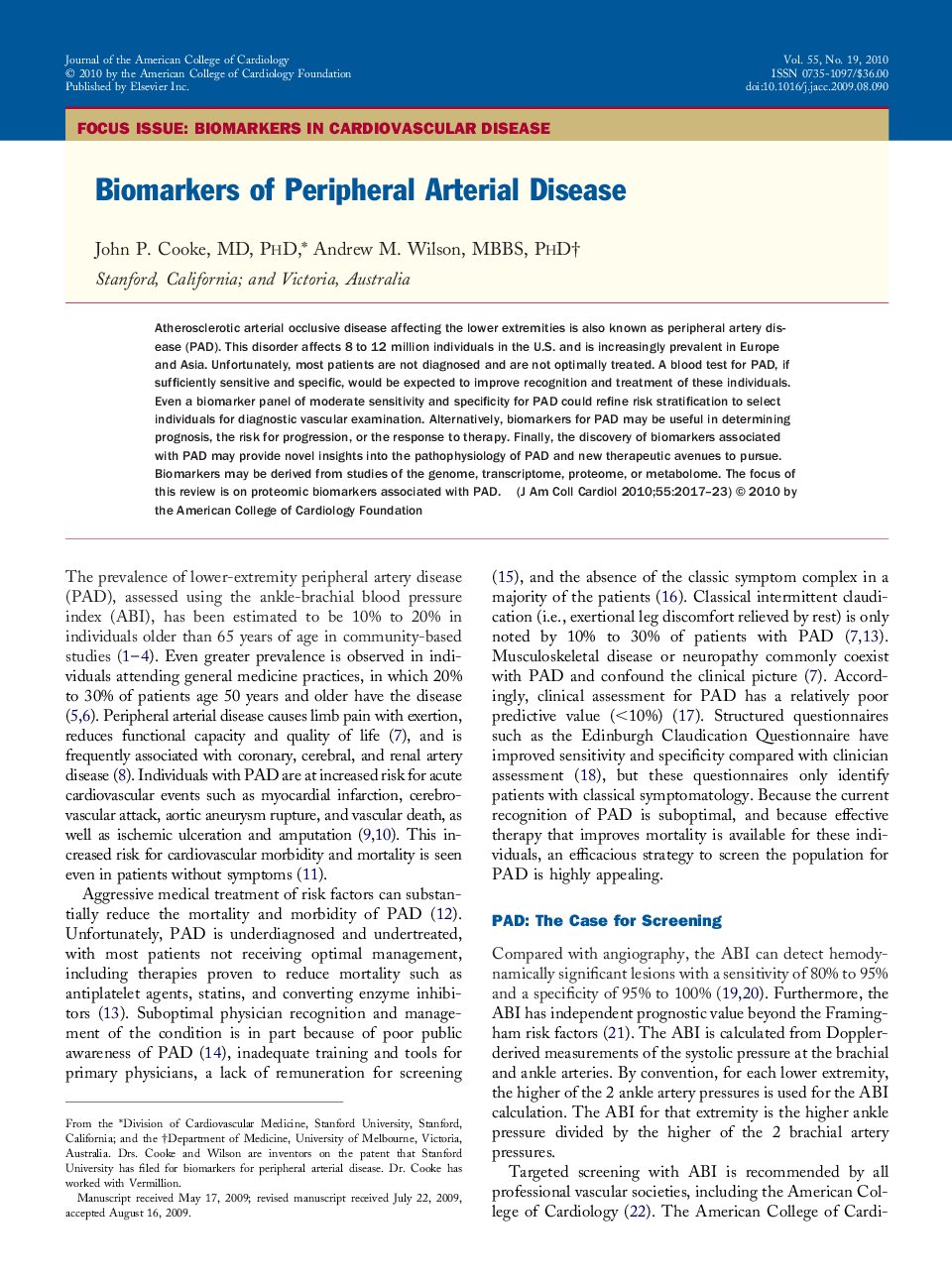| Article ID | Journal | Published Year | Pages | File Type |
|---|---|---|---|---|
| 2948684 | Journal of the American College of Cardiology | 2017 | 7 Pages |
Atherosclerotic arterial occlusive disease affecting the lower extremities is also known as peripheral artery disease (PAD). This disorder affects 8 to 12 million individuals in the U.S. and is increasingly prevalent in Europe and Asia. Unfortunately, most patients are not diagnosed and are not optimally treated. A blood test for PAD, if sufficiently sensitive and specific, would be expected to improve recognition and treatment of these individuals. Even a biomarker panel of moderate sensitivity and specificity for PAD could refine risk stratification to select individuals for diagnostic vascular examination. Alternatively, biomarkers for PAD may be useful in determining prognosis, the risk for progression, or the response to therapy. Finally, the discovery of biomarkers associated with PAD may provide novel insights into the pathophysiology of PAD and new therapeutic avenues to pursue. Biomarkers may be derived from studies of the genome, transcriptome, proteome, or metabolome. The focus of this review is on proteomic biomarkers associated with PAD.
